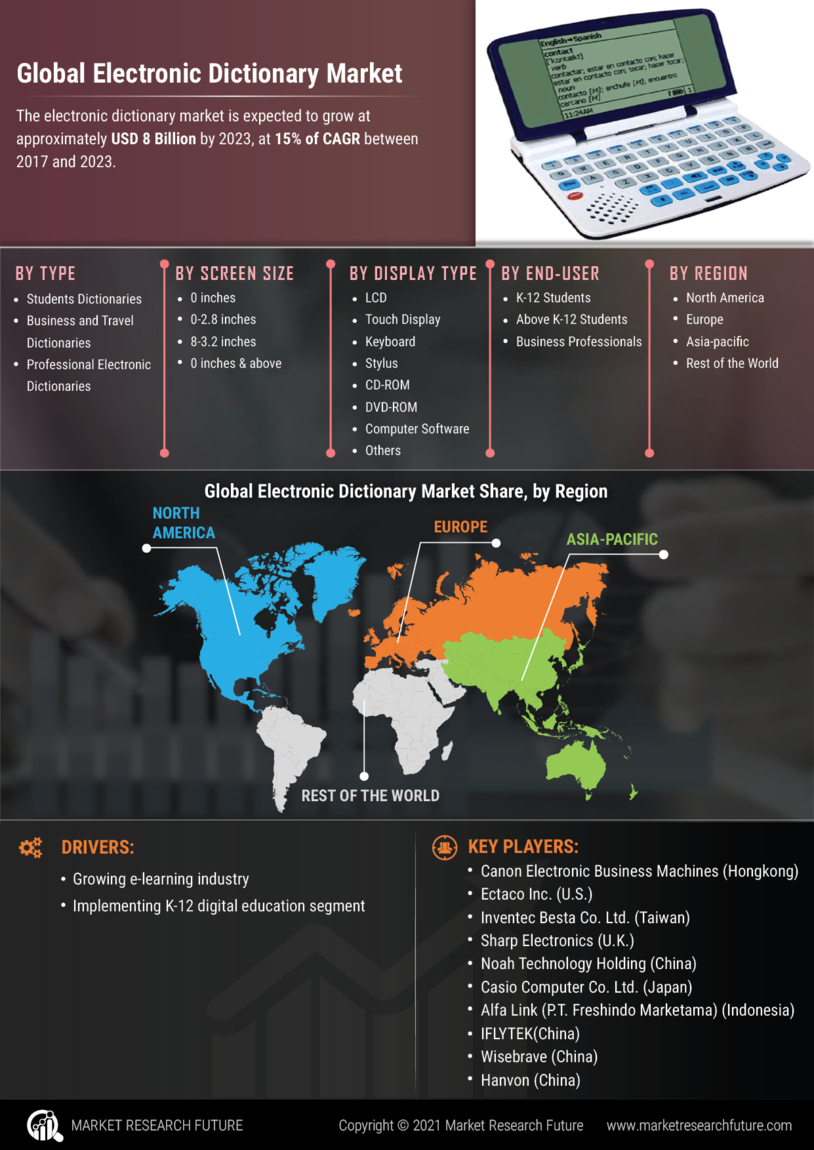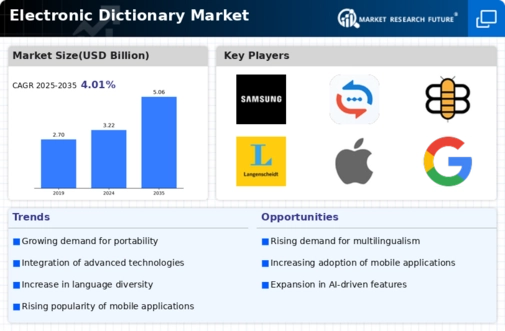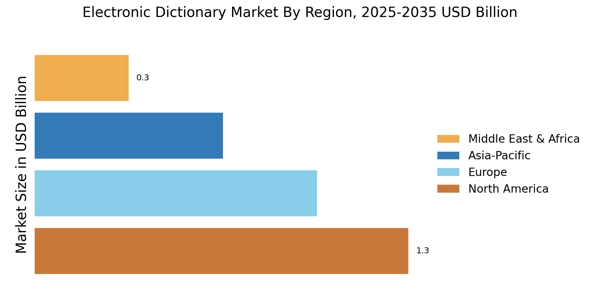Growing E-Learning Market
The Electronic Dictionary Market is experiencing growth in tandem with the expanding e-learning market. As educational institutions and learners increasingly adopt online learning platforms, the demand for digital resources, including electronic dictionaries, rises. The e-learning market is projected to reach approximately 375 billion USD by 2026, indicating a robust shift towards digital education. Electronic dictionaries serve as valuable tools in this context, providing learners with instant access to definitions, translations, and language resources. This accessibility enhances the learning experience, making it more interactive and engaging. Furthermore, the integration of electronic dictionaries into e-learning platforms allows for personalized learning experiences, catering to individual needs and preferences. As the e-learning market continues to flourish, the Electronic Dictionary Market is likely to benefit from this trend, positioning itself as a key player in the educational technology landscape.
Increased Focus on Multilingualism
The Electronic Dictionary Market is significantly influenced by the growing emphasis on multilingualism in various sectors. As businesses expand their operations internationally, the need for effective communication across languages becomes paramount. This trend is reflected in the increasing demand for electronic dictionaries that support multiple languages, catering to diverse user needs. In 2025, it is projected that the number of multilingual individuals will rise, with estimates suggesting that over 50% of the population will be proficient in at least two languages. This shift not only enhances personal and professional opportunities but also drives the demand for electronic dictionaries that facilitate language learning and translation. As organizations and individuals recognize the importance of multilingual capabilities, the Electronic Dictionary Market is likely to witness substantial growth, driven by the need for effective language tools.
Rising Popularity of Mobile Applications
The rising popularity of mobile applications significantly impacts the Electronic Dictionary Market. With the increasing reliance on smartphones for everyday tasks, mobile applications that offer electronic dictionary functionalities are becoming essential tools for users. As of 2025, it is estimated that over 90% of smartphone users utilize at least one language-related application, highlighting the demand for convenient and accessible language resources. These applications often feature user-friendly interfaces, offline capabilities, and interactive elements, making them appealing to a broad audience. Additionally, the integration of social features within these applications fosters community engagement and collaborative learning. As mobile applications continue to gain traction, the Electronic Dictionary Market is likely to expand, driven by the need for innovative and accessible language solutions.
Rising Demand for Language Learning Tools
The Electronic Dictionary Market experiences a notable surge in demand for language learning tools. As individuals increasingly seek to enhance their language skills for personal and professional growth, electronic dictionaries serve as essential resources. The proliferation of online courses and language apps has further fueled this trend, with the market for language learning projected to reach approximately 25 billion USD by 2026. This growth indicates a robust interest in effective language acquisition methods, positioning electronic dictionaries as vital tools in this educational landscape. Furthermore, the convenience and portability of electronic dictionaries cater to the needs of learners, making them indispensable in various learning environments. As educational institutions and individuals alike recognize the value of these tools, the Electronic Dictionary Market is likely to expand significantly.
Technological Advancements in Digital Devices
Technological advancements in digital devices play a crucial role in shaping the Electronic Dictionary Market. The integration of high-resolution displays, faster processors, and enhanced battery life in smartphones and tablets has made electronic dictionaries more accessible and user-friendly. As of 2025, it is estimated that over 80% of the population owns a smartphone, which serves as a primary platform for accessing electronic dictionaries. This widespread adoption of digital devices facilitates the seamless integration of electronic dictionaries into daily life, allowing users to access language resources anytime and anywhere. Moreover, the continuous evolution of technology encourages developers to innovate and improve the functionality of electronic dictionaries, ensuring they remain relevant in an increasingly digital world. Consequently, the Electronic Dictionary Market is poised for growth as more users turn to these advanced tools for language assistance.

















Leave a Comment